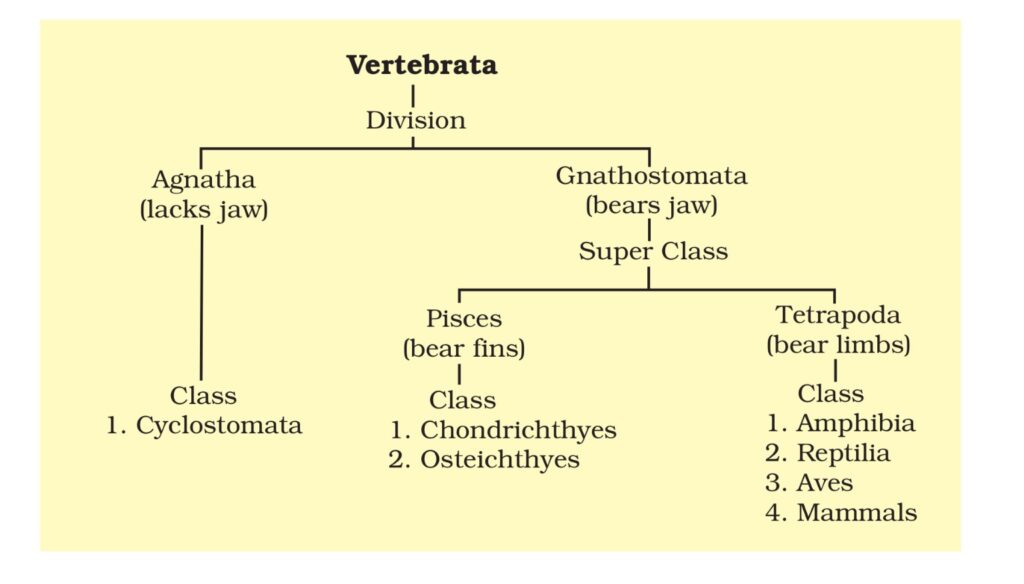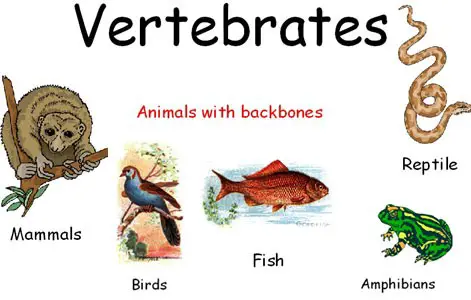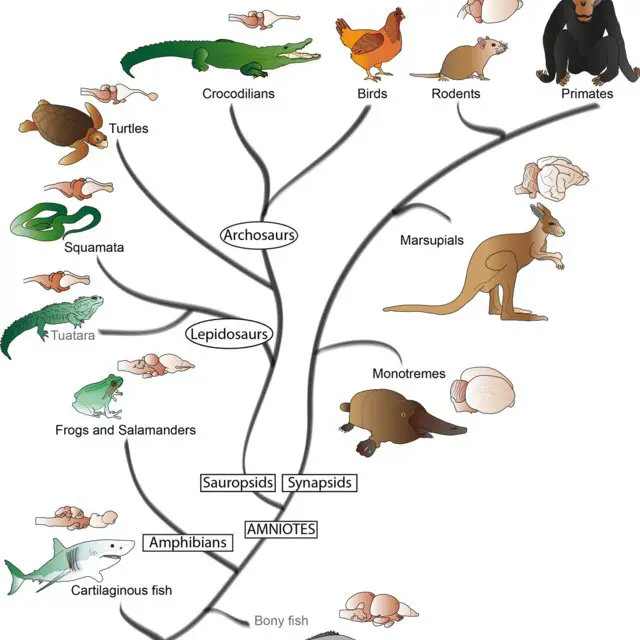The present-day Vertebrata we see not present on earth from the origin of the earth, with time simple organisms evolve to complex organisms and finally evolved into Vertebrate. The phylogeny of Vertebrata means the flow of evolution through which order the simple animals evolved into Vertebrate, the phylogenetic tree represents how Vertebrate evolved from the ancestor animals.
The phylogenetic tree represents the relationship among different animal groups in the perspective of evolution and how one group of animals evolved from another group of animals. We will discuss the evolutionary timeline of Subphylum Vertebrata in different timeframes and it will show which group of animals arrived when.

Table of Contents
Cambrian and Ordovician Period:
Most of the workers think that Vertebrate arrived on our earth during the Cambrian period but there is no fossil evidence during the Cambrian period. But we find first fossil evidence of Vertebrata in the time of the Ordovician period, so we can assume that the Vertebrate present in the Ordovician period must have their ancestors in the Cambrian period. Maybe the Vertebrate ancestors present in the Cambrian period were freshwater habitats so we did not get fossil evidence for them. The fossil evidence of the Ordovician period was jawless fish-like animals, they are known as Ostracoderms and they are currently extinct.
Silurian and Devonian Period:
We find some fossil evidence of fish-like animals of Silurian period but at the time of the Devonian period, we find a large number of fish fossils, for this reason, Devonian period is known as the age of fish.
During Ordovician period we also find fish like fossil but they were jawless Ostracoderms but the fish found off the Devonian period was jawed fish. The jawed fish of Devonian period are known as Placodermi, they are now extinct and most of the workers believe that the Placodermi give origin to the cartilaginous and bony fishes.
It is not sure that the Placodermi give origin to the cartilaginous and bony fishes, previously most of the workers believed that cartilaginous fish give origin to the bony fishes but it is not true.

Carboniferous Period:
The carboniferous period is known as the Age of Amphibians, during the Late Devonian to early Carboniferous period Amphibia first originate on our earth. It is assumed that Crossopterigy a lobed fin bony fish first time came to land and evolved into the primitive amphibians. Amphibia are the first Vertebrate who came on land from water and during the carboniferous period they become abundant.
Mesozoic Era:
During early carboniferous period, the primitive amphibians parallelly give origin to the primitive reptiles, and with time reptiles evolved, at mesozoic ear reptiles becomes abundant. So the Mesozoic era is known as the age of the reptiles. During this time dinosaurs, flying reptiles were present in large numbers and they live around 130 million years on our earth but suddenly they become extinct.
The reptiles were the ancestors of mammals and birds, during the Triassic period, some reptiles evolved into primitive mammals, during late Jurassic period some reptiles evolved into primitive birds. The fossil evidence archaeopteryx represent the reptilian ancestors of birds in which we can see both reptilian characters and birds characters.
Cenozoic Era:
The primitive mammals originate from reptilian during mesozoic era evolved into more advanced and in Cenozoic Era they become abundant, so Cenozoic Era is known as the Age of Mammals and they show most diversity among other classes of Subphylum Vertebrata.

But a large number of species present during the Cenozoic Era become extinct with time and at present-day, only a few portions of all Vertebrate species exist, the rest other species become extinct. They were present in large numbers during tertiary period but after the Tertiary period the number of species decline with time and at Qarternary period their number become very less as compared to the peak level during the tertiary period.
Detailed Study On Subphylum Vertebrata Definition Characteristics Classification Examples and Diagram
Reference
Basis of Classification in Subphylum Vertebrata
An Overview of Classification in Subphylum Vertebrata
Subphylum Vertebrata and its Diversity
Cephalochordata Characteristics Features Classification Examples and Diagram
Urochordata Classification Morphology Characteristic Features
Characteristics Features of Hemichordata
General Comparison of Hemichordata Urochordata and Cephalochordata
Comparative Study of Digestive System in Hemichordata Cephaochordata and Urochordata
Hi Everyone!!! Welcome to Imaluop. Imaluop always try to learn some new and he want to share to other people. Here we will try to learn various topics on Science, specially on Biological Sciences.